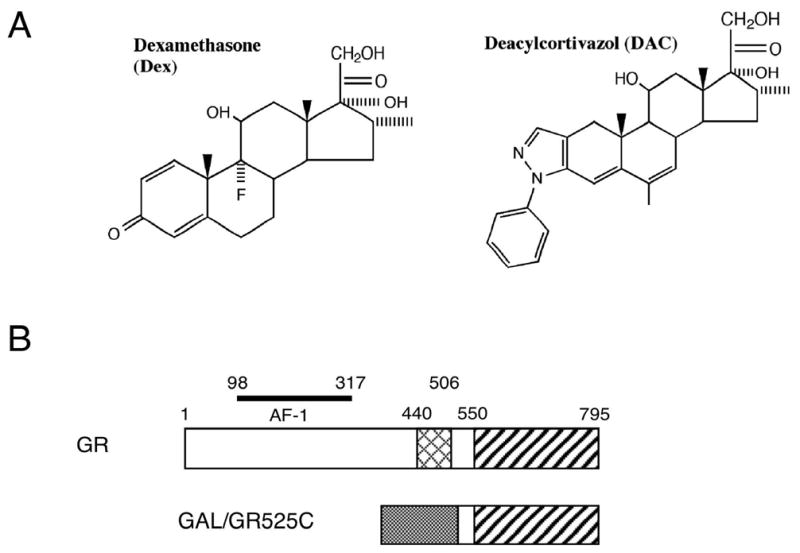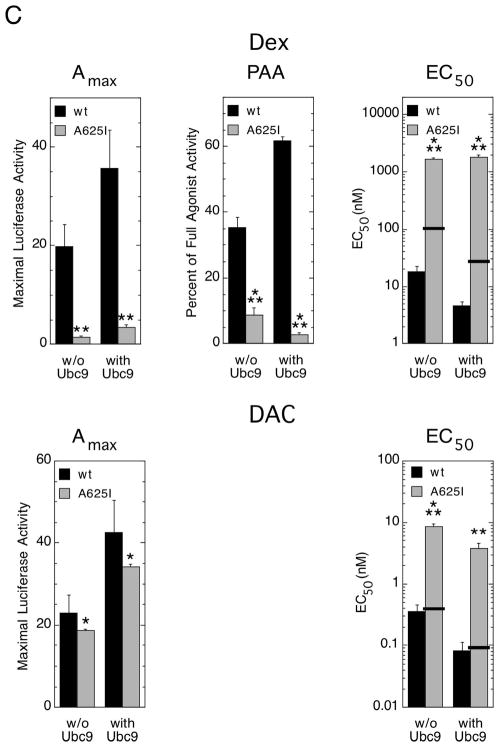Fig. 5.

Role of GR LBD in determining induction properties of Dex- vs. DAC-bound mutant vs. wild type GRs with added Ubc9. (A) Structures of Dex and DAC. (B) Organization of chimeric truncated GRs (GAL/GR525C). Residues 1–524 of wild type GR, including AF1 and DNA binding domains, are replaced by the GAL4 DNA binding domain (shaded box) while the GR LBD (diagonal striping) remains. (C) Variation in induction parameters of GAL/GR525C chimeric receptors in U2OS cells with elevated Ubc9. Data from triplicate transiently transfected cells (1 ng of GAL/GR525C with wild type or A625I GR LBD ± 150 ng Ubc9 plasmid) were generated, analyzed, and plotted along with predicted EC50 values as in Fig. 4 (error bars = S.E.M. from 7 independent experiments).P-values for mutant vs. wild type GR under the same conditions are * < 0.05, ** < 0.005, and *** < 0.0005. The predicted EC50 of Dex with each mutant GR was calculated as in Fig. 1. For DAC, the predicted EC50 is based upon the relative increase in Kd for DAC binding to the A625I mutant vs. wild type GR being 1.1 (9).

